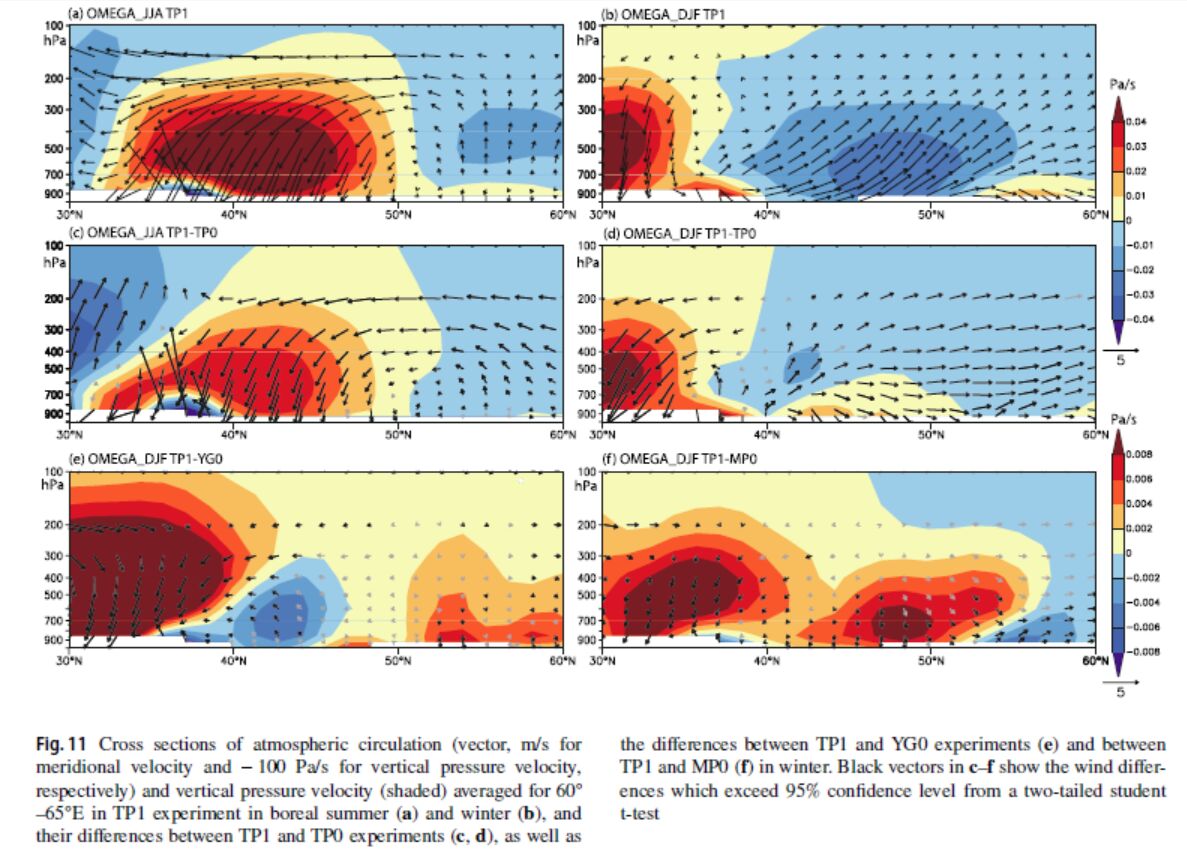Mongolian uplifting analog output
Clicks:562
|
DOI
|
|
|
Key words
|
Mongolian uplift, temperature, precipitation, winds
|
|
Related data
|
Numerical simulation output which were conducted to determine the impact of the Tianshan-Pamir on global climate.
Numerical Model: general atmospheric model CAM3.1 from NCAR (National Center for Atmospheric Research).
Horizontal resolution of this model is T85 (approximately 1.4° latitude × 1.4° longitude).
Experimental Design: based on preindustrial boundary condition, differences between response of “with” or “without” Mongolian Plateau to global climate system are examined, in order to evaluate climatic impact of Mongolian uplifting.
Corresponding Experiment Name: TP1MP1(control, CO2 is 280 ppm and fixed at preindustrial, the other conditions is equal to the contemporary age include topography), TP1MP0(similar to control experiment, only Mongolian Plateau region was reduced to background altitude).
Integration time: 20 continuous years.
Variable Name List: temperature (T), sea level pressure (PSL), horizontal winds (U&V), precipitation (PRECIP), vertical wind (OMEGA), specific humidity (Q), geopotential height (Z3).
This dataset only includes output from the last 15-year seasonal average subsets. And among variables mentioned above, temperature, winds, specific humidity, and geopotential height are multi-isobaric data.
|
|
Data description
|
a. Description of Intellectual Property Rights When using a dataset, please refer to the following documents in the article: Shi Z, Liu X, Liu Y, Sha Y, Xu T, 2015, Impact of Mongolian Plateau versus Tibetan Plateau on the westerly jet over North Pacific Ocean, Climate Dynamics, 44, 3067-3076. 2)Sha Y, Shi Z, Liu X, et al, 2015, Distinct impacts of the Mongolian and Tibetan Plateaus on the evolution of the East Asian monsoon, Journal of Geophysical Research, 120, 4764-4782.
b. The data labels refer to the following specifications: Data sources refer to the following specifications: Chinese Expression: 数据来源于国家科技资源共享服务平台-国家地球系统科学数据中心(http://www.geodata.cn)-东亚古环境科学数据库(http://paleodata.ieecas.cn/index.aspx); English Expression: East Asian Paleoenvironmental Science Database (http://paleodata.ieecas.cn/index.aspx),National Earth System Science Data Center, National Science & Technology Infrastructure of China (http://www.geodata.cn). Acknowledgments refer to the following specifications: Acknowledgments in Chinese: 感谢国家科技资源共享服务平台-国家地球系统科学数据中心(http://www.geodata.cn)-东亚古环境科学数据库(http://paleodata.ieecas.cn/index.aspx)提供数据支撑。 Acknowledgments in English: Acknowledgement for the data support from “East Asian Paleoenvironmental Science Database (http://paleodata.ieecas.cn/index.aspx),National Earth System Science Data Center, National Science & Technology Infrastructure of China. (http://www.geodata.cn)”.
c. Contacts Name: Data processing group Company: Institute of Earth Environment, Chinese Academy of Sciences Tel: 029-62336213 Email: eapsd@ieecas.cn
|
|
Dataset format
|
netcdf
|
|
Data type
|
Climate and environment modeling/Climate and environment modeling/Climate and environment modeling
|
|
Data sources
|
IEECAS
|
|
Enclosure
|
No accessories
|
|
Related pictures
|

|
 Contact card Contact card |
 |
Name:王晓瑜 |
E-mail:wangxy@ieecas.cn |
| Company:地球环境研究所 |
Telephone:18826234513 |